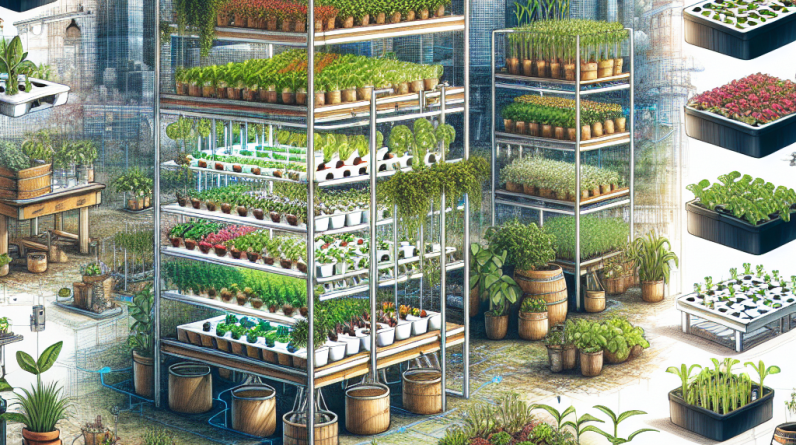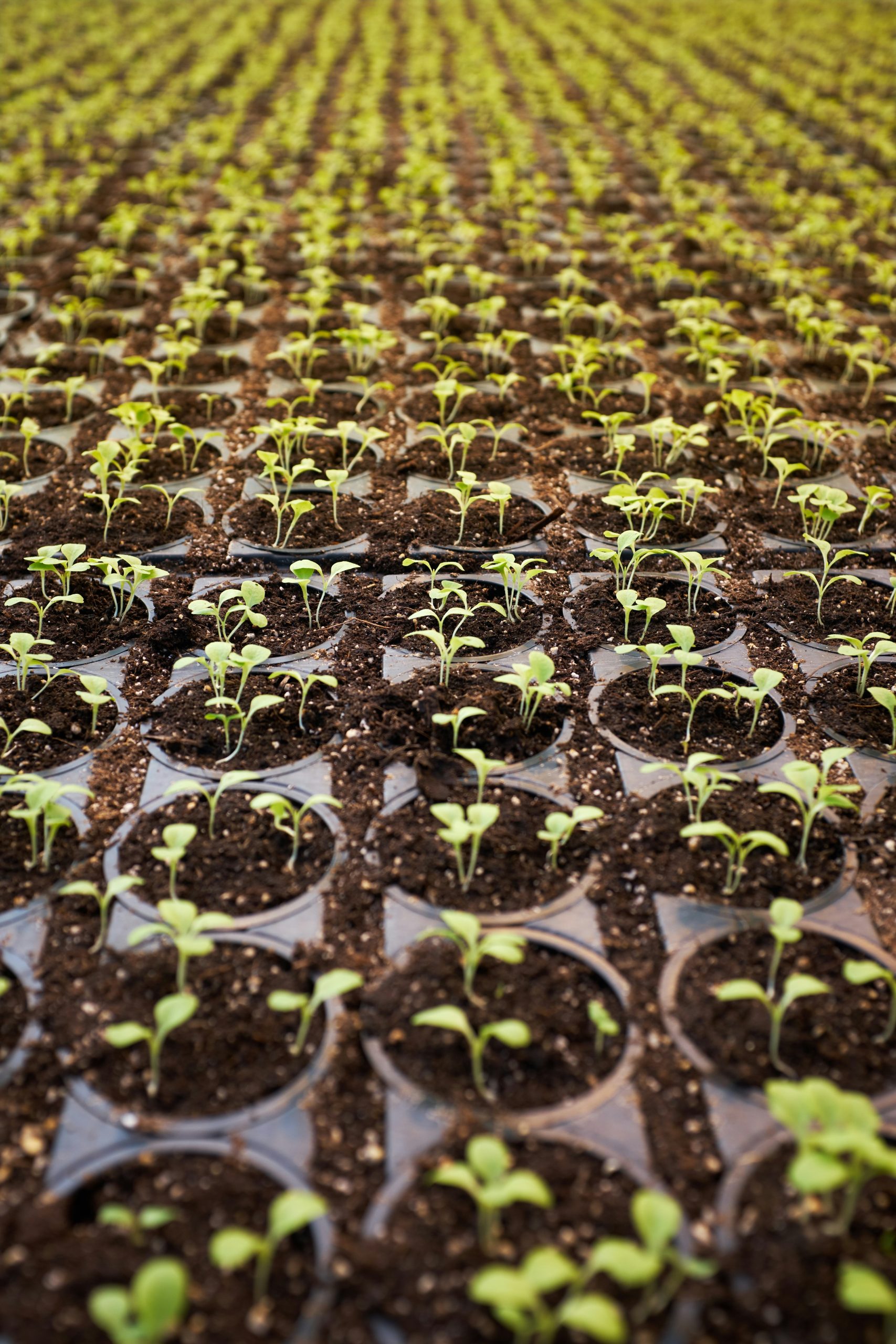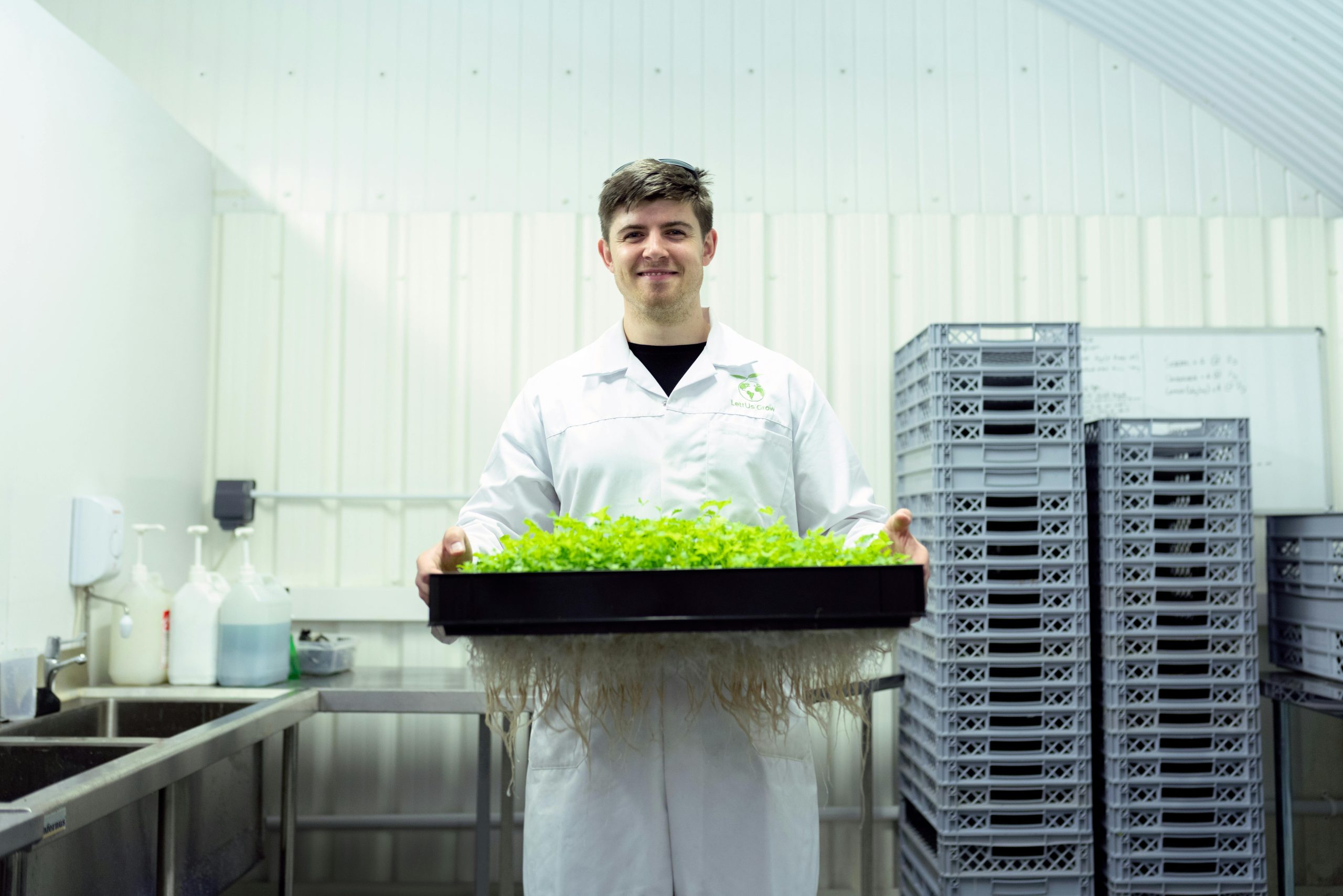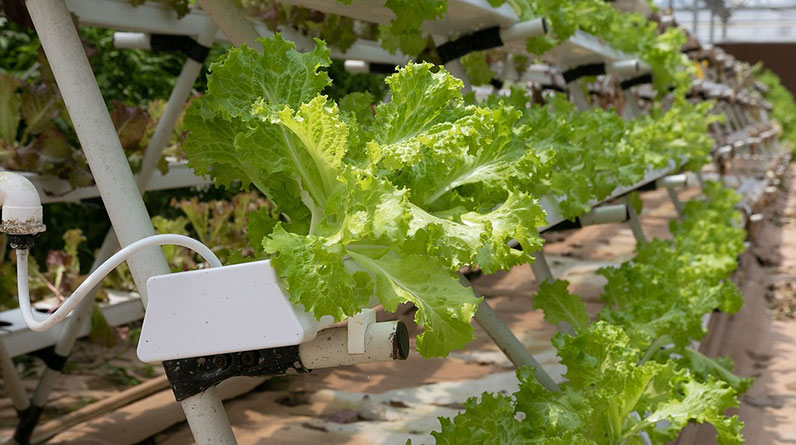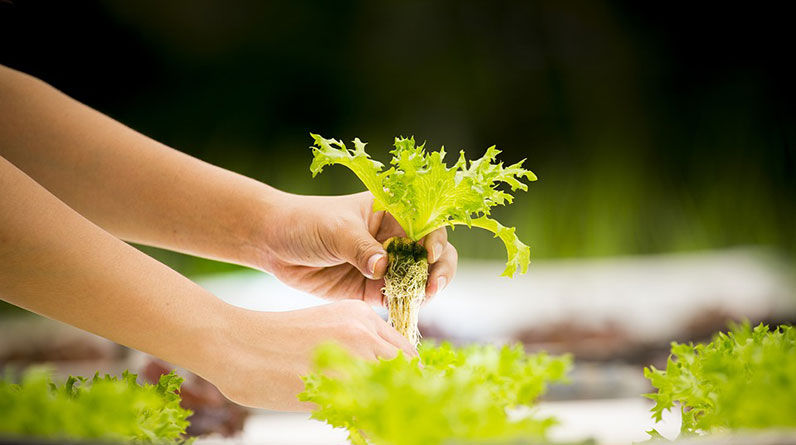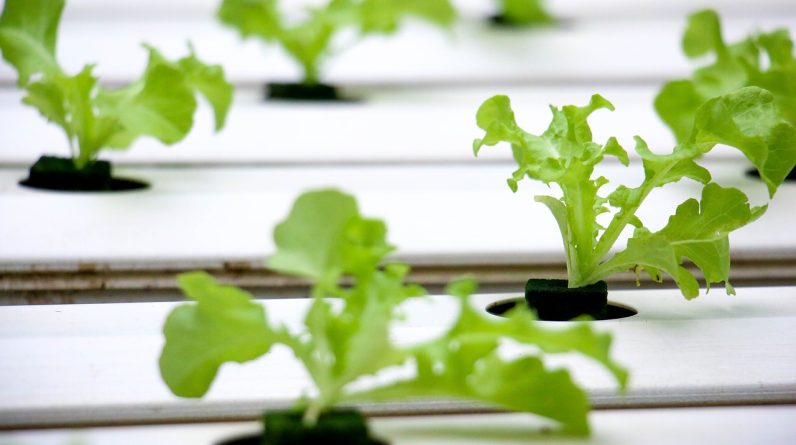
- 1. Choose the Right Hydroponic System for Growing Tomatoes Indoors
- 2. Optimize Lighting Conditions for Indoor Hydroponic Tomatoes
- 3. Maintain Precise Nutrient Levels for Healthy Tomato Growth
- 4. Manage Temperature and Humidity for Peak Productivity
- 5. Support Your Tomatoes with Proper Training and Pruning
- 6. Monitor and Prevent Pests and Diseases in Your Indoor Setup
- 7. Utilize Automation and Technology for Efficient Growing
1. Choose the Right Hydroponic System for Growing Tomatoes Indoors
Understanding Different Hydroponic Systems
When starting with hydroponic tomatoes indoors, selecting the right system is crucial. Popular options include Nutrient Film Technique (NFT), Deep Water Culture (DWC), and drip systems. Each offers unique advantages; for example, DWC is fantastic for large, vining tomato varieties because it provides continuous oxygenation and nutrient flow. In 2025, advancements like automated pH balancing and smart monitoring make these systems even easier to manage for home growers.
It’s important to consider your available space, budget, and experience level when choosing a system. For beginners, a simple drip or ebb-and-flow system can be very forgiving, while more advanced growers might prefer aeroponics for maximum yields. Remember, the capacity of your chosen system will directly impact your tomato plantâs growth and productivity.
Think about scalability as well; a modular system can grow with your experience. Many indoor gardeners are now integrating multiple systems for optimal space utilization, especially in small apartments or dedicated grow rooms dedicated to hydroponic tomatoes indoors.
Practical Tips for System Selection
For 2025, I recommend selecting a system that allows for precise control over nutrients and water. Automated systems with smart sensors are gaining popularityâthey can adjust water flow, oxygenation, and nutrient supply in real-time, minimizing human error.
Look for systems with good reviews for durability and ease of maintenance. Also, consider environmental control features like adjustable light and ventilation to simulate the ideal outdoor conditions for tomatoesâan essential for hydroponic tomatoes indoors to thrive year-round.
Finally, ensure your hydroponic setup is scalable, so you can expand your indoor tomato garden without complete overhaul. This flexibility will make your journey into hydroponic tomatoes indoors much more enjoyable in 2025.
2. Optimize Lighting Conditions for Indoor Hydroponic Tomatoes
Importance of Proper Lighting
Lighting is arguably the most critical factor for hydroponic tomatoes indoors. Since natural sunlight may be limited or inconsistent indoors, investing in high-quality grow lights ensures your tomatoes receive adequate light energy. In 2025, LED grow lights have become more affordable, energy-efficient, and customizable, making them the go-to choice for indoor tomato cultivation.
Tomatoes require about 12-16 hours of light daily, with a spectrum that mimics the sun. Full-spectrum LEDs are effective for providing all necessary wavelengthsâred for flowering and blue for vegetative growth. These lights promote healthy development and maximize fruit production in hydroponic tomatoes indoors.
Furthermore, the placement and intensity of lights should be adjustable. Proper light distance prevents plant scorching, while adjustable timers streamline your grow schedule, ensuring consistency and optimal photosynthesis.
Tips for Effective Lighting Setup
Use reflectors or diffusers to distribute light evenly across your plants, preventing shadowed areas that could hinder growth. Position your lights approximately 12-24 inches above the tomato plants, tuning based on plant response and light intensity.
Seasonal changes can affect your indoor lighting needs; smart lighting systems in 2025 automatically adapt intensity and timing to match plant stages. This feature aids in promoting flowering and fruiting phases effectively.
Remember, consistent light intensity and scheduling are vital for hydroponic tomatoes indoors. Proper lighting boosts not only growth speed but also fruit quality, making sure you harvest flavorful tomatoes year-round.
3. Maintain Precise Nutrient Levels for Healthy Tomato Growth
Essential Nutrients for Hydroponic Tomatoes
For thriving hydroponic tomatoes indoors, maintaining accurate nutrient levels is key. Tomatoes need a balanced mix of macronutrients like nitrogen, phosphorus, and potassium, along with micronutrients such as magnesium, calcium, and trace elements. In 2025, nutrient formulations are more refined, allowing for tailored feeds that enhance flavor and yield.
In my experience, using a high-quality, commercially available hydroponic nutrient solution simplifies the process. Regular monitoring ensures your plants receive adequate nutrients without deficiencies or toxic build-up, which can stunt growth or cause disease.
Testing and adjusting nutrient concentrations weekly is recommended. Many automated systems now incorporate AI-driven nutrient management to optimize feed levels precisely, reducing waste and improving overall plant health.
Monitoring and Adjustments
Using digital pH and electrical conductivity (EC) meters is essential for accurate nutrient management. Keep pH levels between 5.8 and 6.5, since imbalances can lock out essential nutrients. EC levels indicate the strength of your nutrient solution; for hydroponic tomatoes, target around 2.0-3.0 mS/cm.
Adjust nutrient concentrations based on plant growth stagesâhigher nitrogen during vegetative phases and increased potassium and phosphorus during flowering and fruiting. In 2025, smart sensors help automate these adjustments, ensuring optimal plant nutrition with minimal effort.
Consistent nutrient management results in larger, tastier tomatoes and reduces the risk of pests and diseases by promoting strong, healthy plants.
4. Manage Temperature and Humidity for Peak Productivity
Optimal Temperature Ranges
Indoor hydroponic tomatoes thrive within specific temperature rangesâgenerally 70-80°F (21-27°C) during the day and slightly cooler at night. Maintaining these levels facilitates photosynthesis and fruit development. In 2025, climate control systems with smart thermostats are common, helping growers maintain perfect conditions consistently.
High temperatures can cause heat stress, leading to poor fruit set or blossom end rot, while too cool temperatures can slow growth. Using temperature sensors connected to automated systems helps fine-tune your environment, ensuring your hydroponic tomatoes indoors reach their full potential.
Case studies show that consistent temperature control increases yield by up to 25%, emphasizing its importance for indoor tomato production.
Managing Humidity Levels
Humidity should be maintained between 50-70% for optimal growth. Too high humidity can promote fungal diseases, especially in closed indoor environments. Conversely, low humidity causes transpiration stress, leading to issues like blossom end rot.
Dehumidifiers and humidifiers with integrated sensors are helpful tools in 2025, providing precise humidity control. Proper ventilation, including adjustable exhaust fans, ensures fresh air circulation and prevents mold or mildew issues.
Monitoring temperature and humidity continuously with digital systems allows for real-time adjustments. This level of control supports healthy, vigorous tomato plants and bountiful indoor harvests of hydroponic tomatoes indoors.
5. Support Your Tomatoes with Proper Training and Pruning
Training Techniques for Indoor Growth
Tomatoes are vining plants that need support to grow upright, especially indoors where space is limited. Using stakes, cages, or trellises helps manage plant growth, increase airflow, and facilitate harvesting. In 2025, vertical growing systems are highly popular among home growers for maximizing space efficiency.
Training methods like the “screen of green” (SCROG) technique can encourage bushier growth and more fruit production. Regularly tying and guiding stems along support structures prevents breakage and allows your plants to access light more effectively.
Remember, training your hydroponic tomatoes indoors not only boosts yield but also simplifies cleaning and pest management processes.
Pruning for Better Yield and Disease Control
Pruning is vital to stimulate healthy growth and increase fruit production. Removing suckersâthe side shoots that develop between the main stem and branchesâredirects energy toward fruit-bearing stems. Always prune with clean tools to prevent disease transmission.
In 2025, using plant-specific pruning guides and health monitoring apps makes this process easier. Proper pruning reduces the chances of fungal infections, which are common in humid indoor environments.
Apply these techniques regularly throughout the season to keep your hydroponic tomatoes indoors productive and healthy, leading to high-quality harvests.
6. Monitor and Prevent Pests and Diseases in Your Indoor Setup
Common Pests and Symptoms
Indoor hydroponic tomatoes are susceptible to pests like spider mites, aphids, and whiteflies. These pests can rapidement infest your plants, causing stunted growth and deformed fruits. Regular visual inspections are key, especially since pests often hide in the dense foliage.
Diseases such as powdery mildew and blossom end rot are also common indoors, often exacerbated by high humidity and poor air circulation. Maintaining optimal environmental conditions reduces their occurrence.
In 2025, organic pest control methods such as natural predators and eco-friendly sprays are popular among indoor gardeners. These minimize chemical use and keep your tomatoes safe for consumption.
Preventive Measures and Treatments
Implement preventive measures like quarantine zones for new plants and maintaining cleanliness in your grow space. Use sticky traps and introduce beneficial insects to keep pest populations in check.
Ensure good airflow by spacing plants properly and using fans. Proper sanitation and environmental control remain the best defense against pests and diseases in hydroponic tomatoes indoors.
Early detection and swift actionâsuch as targeted organic spraysâcan save your crop and ensure a healthy, pest-free harvest.
7. Utilize Automation and Technology for Efficient Growing
Smart Grow Systems and Sensors
Automation is transforming indoor gardening, especially for hydroponic tomatoes indoors. Smart sensors can monitor light intensity, pH, EC, temperature, and humidity, sending data directly to your smartphone or computer. This real-time insight helps optimize conditions without constant manual adjustments.
Integrating automation systems allows you to set schedules for lighting, watering, and nutrient feeds, reducing labor and increasing consistency. Many systems now include AI-driven recommendations, making advanced indoor growing accessible even for beginners.
Using automated systems also minimizes resource wastage and enhances the overall health of your tomatoes, leading to higher yields and better quality.
Data-Driven Growth and Troubleshooting
Collecting data on your indoor garden helps identify patterns and optimize your setup. For example, if fruiting slows down, data may reveal nutrient deficiencies or temperature fluctuations. Using this information proactively prevents problems before they become serious.
In 2025, some growers are even employing machine learning algorithms to predict plant needs and automate adjustments accordingly. This technological integration results in more reliable, efficient production of hydroponic tomatoes indoors.
Embracing these tools ensures your indoor tomato garden remains highly productive, sustainable, and enjoyable.
Conclusion
Growing hydroponic tomatoes indoors in 2025 is an exciting and rewarding venture. By selecting the right system, optimizing lighting, maintaining balanced nutrients, controlling climate, training plants properly, staying vigilant against pests, and leveraging automation, you set yourself up for success. These seven effective tips form the foundation for a bountiful harvest of hydroponic tomatoes indoors. As you embark on this journey, remember that each step enhances the quality and quantity of your crop. With careful planning and modern technology, youâll enjoy fresh, flavorful tomatoes all year round. Happy growing!
Frequently Asked Questions (FAQs)
1. What is the best hydroponic system for growing tomatoes indoors?
In 2025, systems like Deep Water Culture (DWC) and aeroponics are highly recommended due to their efficiency and high yield potential. Choose based on your space, budget, and experience level.
2. How much light do hydroponic tomatoes indoors need in 2025?
They generally require 12-16 hours of full-spectrum LED lighting daily, with the lights positioned 12-24 inches above the plants for optimal growth.
3. Can I grow hydroponic tomatoes indoors year-round?
Yes, with proper environmental control, including lighting, temperature, and humidity management, you can enjoy fresh tomatoes indoors throughout the year.
4. How do I prevent pests in my indoor tomato garden?
Regular inspection, maintaining cleanliness, using beneficial insects, and organic pest control methods help prevent infestations in your hydroponic setup.
5. Why are my hydroponic tomatoes not setting fruit?
Possible causes include temperature stress, insufficient lighting, or nutrient imbalances. Ensuring optimal conditions and balanced nutrients promotes fruit set.


